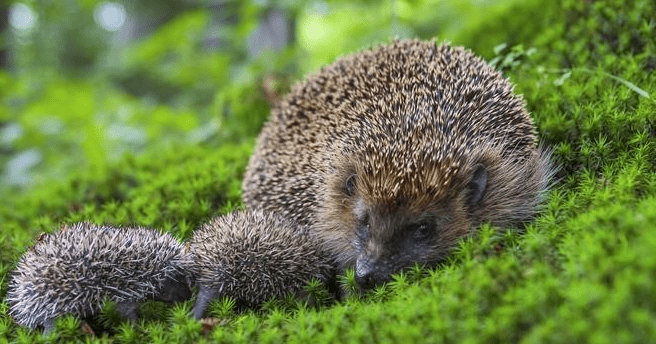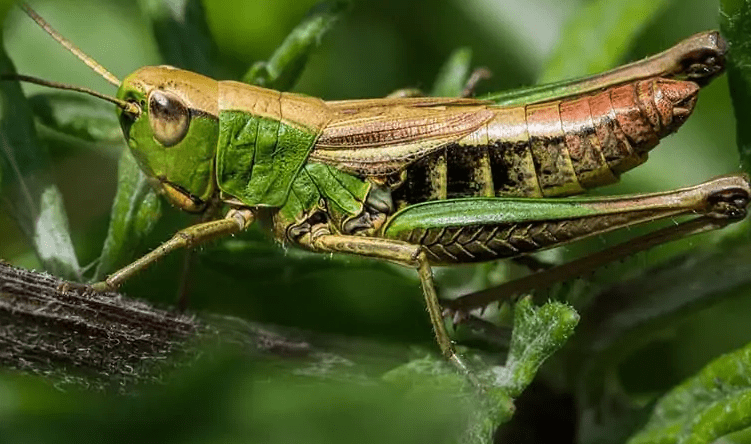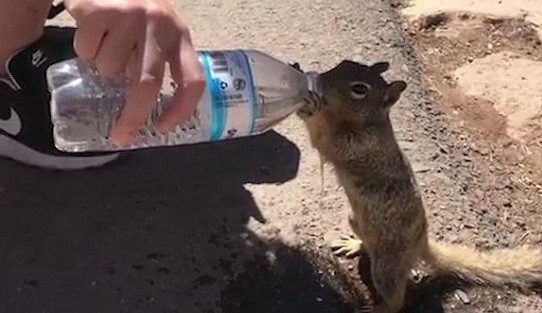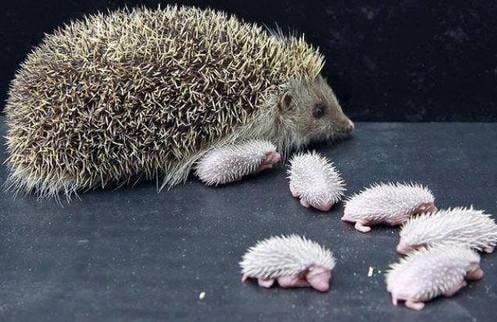They hop around in our gardens or squat at the edge of the pond. In summer, they delight us daily with a loud concert. But in winter they suddenly disappear from the scene. Has the cold robbed them of their vital energy? Or do they have their very own way of spending the winter outside unharmed?
Contents
Frogs, toads and body temperature
As amphibians, frogs and toads belong to the group of cold-blooded animals. This means that they do not keep their body temperature at a constant value throughout. Rather, their body temperature is linked to the prevailing outside temperature. Of course, only within certain limits. In winter, the temperature is consequently turned down a few degrees. However, if the temperature falls below 10 °C, this has further consequences for the quakers. They lapse into so-called hibernation and hibernate in this state.
Yes, many frog species undergo a form of hibernation or dormancy during the winter months or in response to adverse environmental conditions. This state of dormancy is often referred to as “brumation” in the case of cold-blooded animals like frogs, reptiles, and some insects. During this period, frogs become less active and may seek shelter to conserve energy and survive harsh winter conditions. Here’s how frog hibernation, or brumation, works:
- Decreased Activity: As the temperatures drop and daylight hours decrease, frogs become less active. Their metabolic rate decreases significantly, which allows them to conserve energy.
- Hiding and Shelter: Frogs may seek shelter in various places, such as underground burrows, leaf litter, or at the bottom of ponds or streams. They choose locations that offer some protection from the cold and help maintain a stable, above-freezing temperature.
- Metabolism Changes: During brumation, the frog’s metabolic processes slow down, including heart rate, breathing, and digestion. They essentially go into a state of suspended animation.
- Breathing: Frogs absorb oxygen through their skin, even when submerged in water or burrowed in mud. Some frogs may remain partially submerged in water throughout the winter, which provides access to oxygen and helps maintain body temperature.
- Emergence in Spring: When temperatures warm up and the environment becomes more favorable, frogs gradually become more active and emerge from their hibernation sites. They resume feeding, breeding, and other activities.
It’s important to note that not all frog species hibernate or brumate in the same way or under the same conditions. Some frogs, like wood frogs, can withstand freezing temperatures and have adapted unique physiological mechanisms to survive in cold climates. Other species may migrate to warmer areas or remain active in milder winter conditions.
The ability of frogs to hibernate is a remarkable adaptation that helps them survive in environments with seasonal temperature extremes. It allows them to conserve energy and avoid the challenges of finding food and staying active during the winter months.
Life in economy mode
As early as October, the temperature can drop below 10 °C in this country. For frogs and toads, movement is hardly possible. Their cooled bodies do not allow this. If temperatures continue to drop, other bodily functions are throttled back until only respiration and the heart are working on the back burner. In this economy mode, energy consumption is kept to a minimum, so that the animals get through the winter well with a few accumulated reserves.
- Rigidity sets in at temperatures below 10 °C
- animals remain motionless in their place
- if it is warmer in between, rigidity is interrupted
- then they hop also in winter through the area
- when the temperature drops again, the animals return to winter rigidity
- own body mass supplies the necessary energy
- Life-threatening temperature range
Ambient temperatures down to zero degrees are still tolerable for these amphibian species. However, if the thermometer shows values in the minus range, life-threatening danger exists for the little hoppers. All body functions come to a standstill and the animal dies. Only a few specimens manage to defy the frosty cold for a short time.
Therefore, a protective hiding place is absolutely necessary, where it is a few degrees warmer and they can hibernate safely in it. After all, no one knows in advance whether the approaching winter will take into account these animals and only string together mild days.
Safer shelter for the winter
Toads and most frog species overwinter on land. They are not nest builders, the hiding place must already be found suitable.
- prefer damp holes in the ground
- subterranean tunnels of mice and moles are suitable for them
- hidden places under tree roots
- rock crevices
- spaces under stone slabs
- cavities under damp wood
- piles of leaves
Toads also like compost heaps
Note: In the fall, many frogs and toads wander around, looking for a suitable place to overwinter. In the process, they also cross traffic roads. Pay special attention to these endangered animals at this time of year so they don’t get run over.
Hibernating in water
The water frog, the grass frog and other pond frog species like it particularly moist and therefore overwinter in standing water if possible.
- the water body must have sufficient depth
- animals swim to the bottom of the water body
- there are usually temperatures in the plus range even during frost
- while the water surface freezes
- burrow into mud and become “invisible”.
- plant roots and algae are a welcome visual protection from predators
Ponds with low water levels pose a potential hazard to wildlife if they are exposed to the winter cold in them. Because of the shallow depth of water, frost can penetrate to the bottom and frogs would freeze to death.
Note: Make pools located in your garden inaccessible to the frogs as early as autumn. A fine mesh screen cover will keep the green hoppers from entering these unsuitable watering holes.
Breathing under the ice
Once the water in the pond is frozen, the frog is trapped underneath. Although it is in winter torpor, it still needs oxygen. In the water, this is only available in small quantities. Is that enough for the frogs to overwinter in? To make matters worse, lung breathing is not possible under water. Fortunately, the frog drives in this respect two-track.
- can breathe with its lungs and through its skin
- in summer its oxygen demand is high
- then it depends on both ways of breathing
- in a frozen pond only skin breathing is possible
- it is sufficient, because the oxygen demand decreases with rigidity
- food is eliminated from the menu
Animals, which cannot move because of the winter rigidity, must arrange themselves of necessity with an empty stomach. This is not so bad, because during hibernation, their oxygen requirements are only a fraction of the usual amount. They have to feed themselves the fuel for breathing and light heartbeat at times and hope that it will be enough. Because if the winter fat is completely eaten up in the middle of winter, there is no supply within reach. This is one reason why many frogs do not greet spring alive, especially in bitterly cold winters.
Offer your own pond as a winter hotel
The home garden pond may be well suited as a winter shelter for water-loving frogs. It should be deep enough so that the water does not freeze all the way to the bottom.
- Minimum depth is 50 cm
- 80 cm or more is even better
- the deeper the pond, the warmer it stays at the bottom
Another factor that ensures survival is sufficient oxygen supply during the icy winter months. Although amphibians have reduced their oxygen intake, a basic supply must still be available. This can become a problem, especially in landscaped ponds. For example, if they are covered with putrid sponge, additional oxygen is depleted. It should be removed in the fall.
Further measures can improve the oxygen content:
- Installation of a permanently running filter/oxygen pump.
- Reed grasses in the pond enable air exchange
- Use of oxygen-producing underwater plants such as hornworts
- Removal of dead plant matter, foliage, etc.
In winter, when the garden pond is covered with a thick layer of ice, the frogs underneath are in hibernation. But even in this dormant phase, they react to outside disturbances. They then awaken briefly from rigidity and consume an unnecessary amount of oxygen, which they may lack at a later time. Therefore, avoid breaking the ice layer and other impacts that can lead to the awakening of the hibernating guests.








